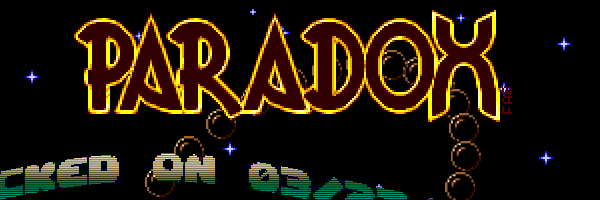This CreativeJS post is a double-hit of retro demoscene nostalgia and the tools to make some yourself. NoNameNo have released a bundle of JS libs called codef which are specifically aimed at creating demoscene style effects. It uses a mash-up of three.js, flod for tracker playback and raw canvas blasting code to generate the effects in browser. Out of the box it has functions for such classics as vector balls, sine-waves, bitmap font scrollers, glenz vectors (faked of course), rasters, starfields and plenty more. There is also a basic sequencing system allowing you to chain effects together, or feed one into another. An examples folder provides plenty of source for you to get up to speed with and while the whole library certainly takes a very ‘hacked together’ approach, often flying in the face of any kind of web standard or best practise, it’s all just for fun anyway. Plus there’s something very rewarding about throwing a few lines of code together and seeing a large parallax scroll plane with some stars flying past.
The site We Are Back is then used to showcase the demos that get created with codef. They range from complete re-creations of classic intros and cracktros, such as those from the likes of Paradox and Crystal, to new demos inspired by the oldskool vibe. There are loads to watch and depending on your age they’ll either bring back waves of 16-bit nostalgia or be little more than audio-visual curios. The concept of such re-creations isn’t new of course and borrows heavily from the site Flashtro where they’ve been doing similar things for years. But it’s always nice to rekindle memories and maybe inspire a younger generation to have a go too.
This is not JavaScript for the faint of heart however. Zero tolerance is given to older web browsers or slow hardware. If your PC/Mac/browser can’t handle it then “tough luck” is their response (one I wish I could use in client work sometimes, but alas not!) Web Audio is used heavily and graphics are pushed around without mercy, expecting a GPU accelerated canvas to be present and do the heavy lifting. Forget about mobile too, you’ll receive a slightly unsubtle “warning” if you dare venture to the site from there.
There is of course some blissful irony that re-makes of demos that originally ran in just a few KB memory on 8Mhz hardware now require graphics cards with gigs of RAM  But tech arrogance aside it’s still fascinating to see little pockets of creativity bubbling up like this. Demos and their kind may hail from a specific point in computing history, but for some reason their charm remains intact, much like the way 8-bit style games are still massively popular today.
But tech arrogance aside it’s still fascinating to see little pockets of creativity bubbling up like this. Demos and their kind may hail from a specific point in computing history, but for some reason their charm remains intact, much like the way 8-bit style games are still massively popular today.
If you’ve ever wanted to have a go at creating a demo then grab codef. Or if you just want to see what others have been making then trawl through wab.com – just be sure your kit is up to it first.

